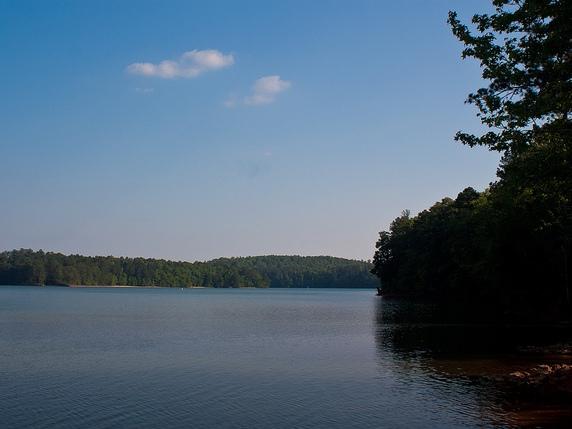
Section Branding
Header Content
Despite Rain, Lake Levels Fall
Primary Content

Don’t let those afternoon showers and thunderstorms fool you. Water levels in Georgia’s large, federally run reservoirs continue to drop.
On the western border of the state, West Point Lake near LaGrange is 7.5 feet low. And Lake George in southwest Georgia is almost four feet low.
Those western lakes especially have seen water levels rise and fall as thunderstorms at times dump a foot or more of rain. But those fluctuations are insignificant along the hundreds of miles that make up the Apalachicola-Chattahoochee-Flint River system, said Pat Robbins with the U.S. Army Corps of Engineers Mobile district.
“The fact that one particular lake in the center of the system goes up due to a thunderstorm, that doesn’t mean you’re getting any flows downstream,” Robbins said. “So you just, you get the blurp and then it just starts on a downward trend again.”
Forecasters have long said Georgia needs a tropical storm to ease the drought and recharge reservoirs. Robbins said the entire ACF basin needs that drenching rain.
“If you look at Tropical Storm Debby earlier this year down in Florida, it got in the lower Apalachicola [River] but it did not come up and affect any of the actual lakes that store water,” he said. “It has to go to the right spot to be beneficial.”
The Corps expects lake levels around the state to fall another foot or two in the next month. But Robbins said forecasters expect an El Nino weather pattern to kick up in September, which usually means a colder, wetter winter.
Nearly two-thirds of Georgia is in severe, extreme or exceptional drought.
Tags: drought, Lake Lanier, Lake Hartwell, U.S. Army Corps of Engineers, Lake Thurmond, West Point Lake, georgia drought, federal reservoirs, lake levels, Lake George
